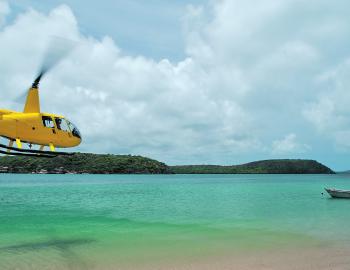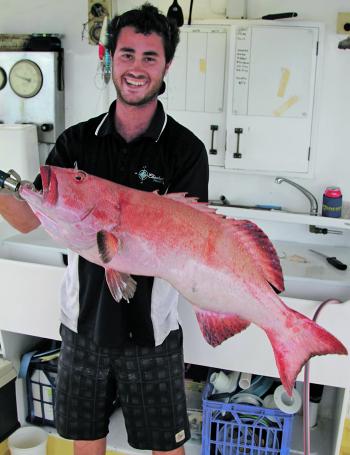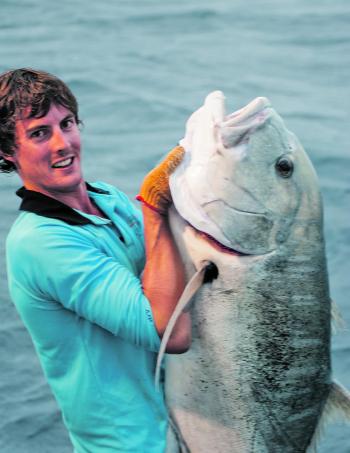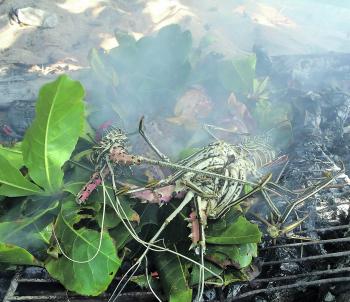February can be a difficult month for inshore and estuarine anglers up in the Cape. Monsoonal winds and rain can be a daily occurrence at times in February, but those lucky enough to take advantage of calm weather windows at this time of year will often be larger vessels, capable of heading offshore to the outer reefs, deep shoal patches and bluewater currents out wide.
Blue marlin, wahoo, yellowfin tuna and mahimahi might be on the scorecards of charter vessels working around offshore pinnacles and bait gatherings. The chance of smaller black marlin, sailfish, Spanish mackerel and giant trevally damaging a spread of lures will increase around the outer reef edges and inshore shoal and reef grounds.
Inshore areas are quite often dirtied by the sediments carried off the land throughout February. Headlands and coastal beaches on the east coast will usually have enough sediment not to be their usual crystal clear. On the west coast beaches, this is not necessarily the case. Current lines from the rivers mixing with shallow and clearish beach waters can bring about brilliant fishing.
After serious rains, there can be a real mixing of fish activity along the coast, especially in saltwater areas surrounding a freshwater plume. King threadfin, little steelbacks, blue salmon, queenfish and catfish can swarm in these areas at times, feeding on tiny baitfish and crustaceans.
Just offshore along the west coast’s shallow reef systems live almost every trevally species and sometimes they are thick. The species list can consist of giant trevally, Papuan, bigeye, bludger, golden and diamond trevally to stretch the arms of those jigging and casting soft plastics around reefy grounds. All these fish pull and can leave anglers sore in the shoulders.
Isolated reef patches in deeper, cleaner water will work better at this time of year, especially on neap tides. These are spots where fish have a chance to settle as soon as there is a break in the weather. Generally spots between 15-35m of water down the west coast and 20-80m+ on the east coast are the areas to be targeting.
If it’s pelagics you are chasing off the west coast, a little run in the tide may be needed to fire the fish up. Isolated rocks and contour lines will hold good numbers of Spanish mackerel out wide. Longtail and mac tuna will show up in large, sporadic pods basically anywhere wide of the coast in the giant Gulf of Carpentaria. Finding sailfish and small black marlin will be a process of locating baitfish holding midwater and during calm conditions up on top.
A spread of trolled skirts with added variation of skipping garfish is what’s needed to target these fish on light tackle. When you locate sailfish, the whole deck needs to be prepared, because a whole pod might show up, ready to eat anything presented. Always have a spin rod rigged and ready to chuck at any dark shape you cruise past on the surface.
February will be a tough month for most inshore, but for all those lucky enough to avoid unpredictable weather and find themselves way offshore under clearing skies, the rewards will definitely be there.
• For information on remote charter operations for tailored fishing adventures, please email Tim on --e-mail address hidden--
Reads: 922

A decent coral trout taken on a popper over shallow reef. 
February will look gloomy but may present some calm days. 
Check out this huge coral trout taken over shoal grounds! 
This big GT was taken on a live bait behind the boat. 
Pilot whales corralling bait offshore. 
These crayfish look good smoking on an offshore cay. Matched Content ... powered by GoogleLatest Articles

Most Popular |
|---|



